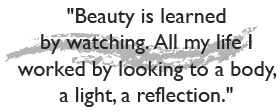IN MEMORIAM
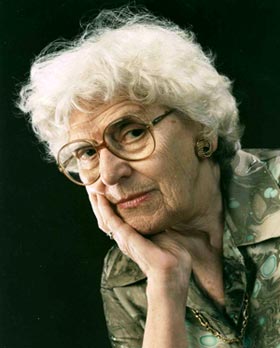
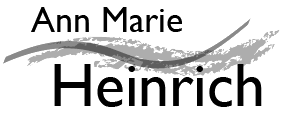
(1912 - 2005)
At her small studio she trapped as no one ese the golden Porteña decade, while transforming the craft of photography in art. Her life and work are an undying testimonial to the argentinean migration.
October 1st, at age 93 Annmarie Heinrich died, symbol of the argentinean photography of the XX century and a core figure in the cultural history of the country. Her expertise in portrait, captured the big stars of argentinean movies, at the top of the golden decade of the 40's, for the covers of magazines such as El Hogar, Sintonía, Alta Sociedad and Radiolandia.
She also portrayed with her unique glance, several cultural figures like Eva Duarte, Jorge Luis Bourges, the singer Marlene Dietrich and Pablo Neruda, among many others.
Her sons Alicia and Ricardo Sanguinetti -photographers as well- in pain expressed through a bald but sensitive note: "With the spring arrival, she decided to leave. Still, she is capable of life in us with her images, those which were emerging as a result of a strict conjuction of life, ethics and art, basis of her aesthetic conception, where her commitment was human in all it's dimension."
Heinrich was born in Germany on January 9th 1912. Her father Walter, a professional violinist, decided to move his family to Argentina, after being injured on the First World War. In 1926 they arrived to Entre Ríos where her uncle Karel, a photographer, introduced her to what would be her profession. By moving with her family to Buenos Aires, Heinrich started her apprenticeship in a photographic studio in Belgrano, and self-taught in her Villa Ballester home, where she had a dark room.
According to Juan Travnik, "Annmarie had the subtle capability of observation to retrieve from every portrait, a deep sparkling look, a unique gesture, magical".
Heinrich's career took place in a parallel way to the growth of the film industry as well as the radio popularization. Travnik, curator to Heinrich's retrospective, believes her passion for dance, scenery and plastic arts were the basis for her photographic look.
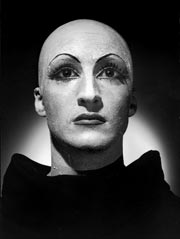 |
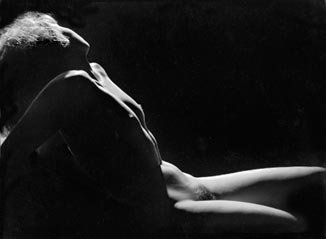 |
| Antonio Truyol |
Tilda Thamar |
Marcos López - the argentinean photo-artist with the most international projection- spoke about the deep influence that Heinrich had on his work. "When I arrived from Santa Fe at the early 80's, I visited her at her studio at Avenida Callao. She was one of the first ones to support my work. I respected her deeply for her work: her prints were admirable, the way she put light, how she was at the portraits command. Today, as it is so common to be artist-photographer, Annemarie's career is a huge model".
Heinrich considered portrait art as a colaboration between the photographer and the model. In an essay published by Clarin in 1993 she wrote: "A good portrait is much more than a carné photo. A face must express all a human beeing has inside, and this takes time".
Heinrich, was also an exceptional technique, masterful and innovator in lighting and negative retouch. In a moment she confessed: "For sure I will not go to heaven, for the most part of my career I used too mucho retouching and don't have the number of fat women I portrayed as skinny".
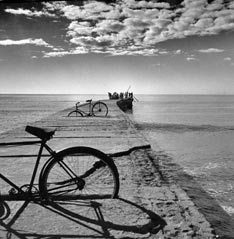 |
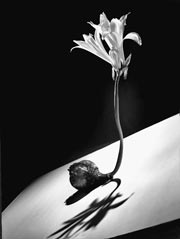 |
| Bicycles 1970 | Bulb blossom 1941 |
Images created by Heinrich are part of the collective argentinean memory. In 1939 she made the first photographs of the at that time unknown Eva Duarte, at that moment a 20 year-old actress. Recalling that session Heinrich said, "The first time I photographed her, was for Sintonia Magazine. I was asked to make: "good-slightly-sexy photographs of her, if it's possible" something that I simply couldn't do because Eva was not sexy. She was a simple modest girl".
Besides the portrait, Heinrich developed during all her career the art of nude. In 1991 she caused a small scandal when she showed, in the window of her Callao and Las Heras studio, a nude photograph of actress Niní Gambier, done in 1944.
| To abbreviate her artistic career and her vision of art, she said:
Heinrich didn't die, then, she stopped looking. |
Clarín
Andrés Hax.
ahax@clarin.com
